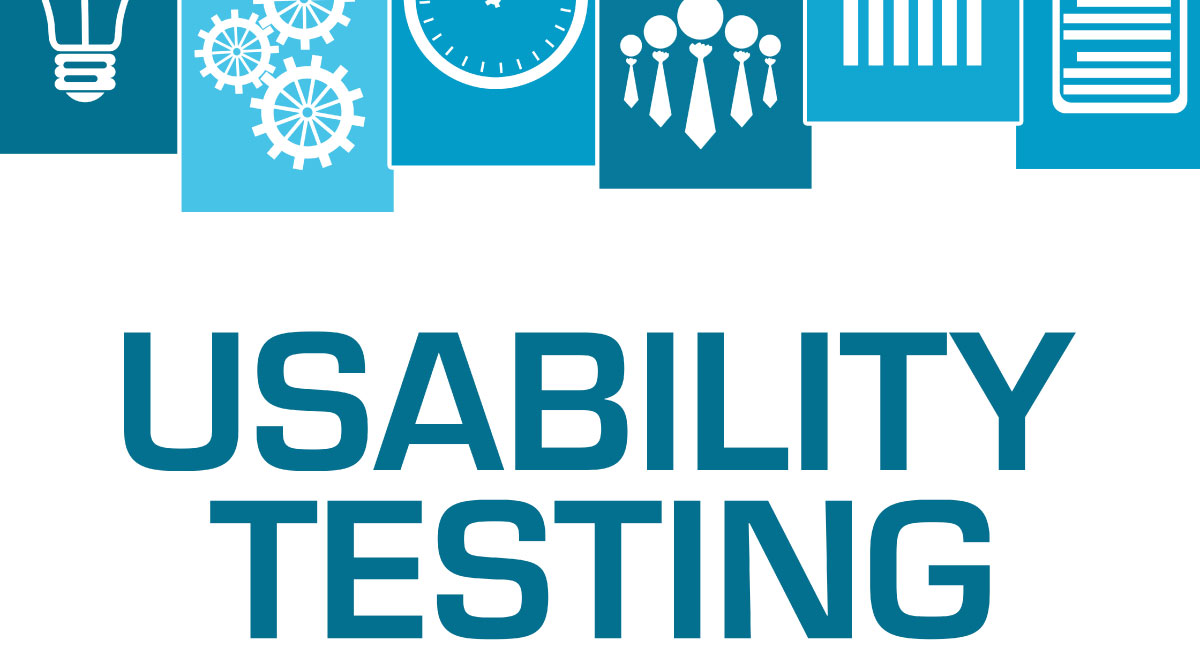Website and application developers can pour all their time, talent, and resources into creating the perfect product that functions smoothly and does everything it’s designed to. Still, if the users need help interacting with it or have bad experiences, those efforts are doomed to failure. That’s why we need usability testing methods.
This article explores UX/UI testing methods, including website usability testing. We will define the terms, detail the various types, outline testing benefits, and explain when the testing should be performed. We’ll also share a comprehensive online UX/UI program that can help aspiring designers boost their careers.
What is Usability Testing?
It is a branch of user research that evaluates user experiences when interacting with an application or website. This testing method helps designers and product teams to assess how intuitive and easy-to-use products are.
It reveals issues with the product that the designers and developers may have yet to notice by having real users complete a series of usability tasks with the product while also noting the customers’ behavior and preferences. The paths taken to complete the tasks, results, and success rate are then analyzed to highlight potential issues and areas for improvement.
The ultimate goal is to create a product that remedies the user’s problems, helping them achieve their objectives while delivering a positive experience.
Also Read: How to Design a User-Friendly Interface?
What ISN’T Usability Testing?
Now that we’ve shown what usability testing is, let’s show what it isn’t. People often need clarification on usability testing with user testing and user research. Hey, they all sound the same, right?
However, user research describes collecting insights and feedback from product users and then using this data to guide and inform product decisions. Usability testing, on the other hand, is a specific type of user research conducted to assess the usability of a product or design. So yes, it can be considered a sub-group in the user research family.
User testing is an umbrella term that can describe user research as a whole or the specific process of testing ideas and products with real users. The latter adopts a quantitative approach to collecting user feedback, usually before usability testing. However, it doesn’t provide qualitative data on why users struggle to finish tasks.
The Key Benefits of Usability Testing
It brings many benefits to the table, including:
- You can tailor products to your users. Even if you understand your product, users might have a different take. By talking to users directly and watching how they interact with and experience the product, you can better comprehend their needs and adjust the product to work for them. These changes will ultimately serve their needs and solve their issues more effectively.
- It reduces developmental costs. Usability tests save time and money by avoiding costly development mistakes. For instance, if you discover users struggle to navigate a specific feature, you can fix it before launch. Changing a product before launch rather than after release is considerably cheaper.
- It increases user satisfaction and brand reputation. It lets product teams identify potential issues and make necessary improvements before a release. This process can lead to a consistently better user experience, creating a loyal customer base and reflecting well on your overall brand reputation.
- It increases accessibility to all. Accessible products are designed and developed to be enjoyed by as many people as possible, regardless of their visual, auditory, physical, or cognitive requirements. Of course, your product must comply with codified accessibility standards and regulations, but it will also benefit from prioritizing accessibility. When you use the usability testing process to include customers with diverse needs and abilities better, you promote and contribute to a more equitable digital marketplace and landscape.
- It mitigates cognitive biases. Our minds love hastily making up shortcuts to draw quicker decisions or inferences. Although this is just an effort to be efficient, it can lead to subconscious beliefs or assumptions, otherwise known as cognitive bias. Usability testing helps remedy biases such as the false-consensus effect by offering objective feedback from actual people, ensuring that product design decisions are based on actual user behavior instead of the assumptions and opinions of the people already with the product and may already have a very subjective opinion.
When Should You Perform Usability Testing?
You must continuously perform usability testing to ensure the product stays relevant and solves the customer’s most urgent issues throughout its lifecycle. Here’s a quick summary of when to conduct it:
- Before you begin designing
- Once you have created a wireframe or prototype
- Before launching the product
- At regular intervals after the product launch
Also Read: A Guide to Improving and Measuring User Experience
The Main Usability Testing Methods
Usability testing can be split into five categories, each offering two options. In many cases, usability testers can use more than one category simultaneously.
Qualitative vs. Quantitative
- Qualitative. Qualitative testing emphasizes gathering in-depth insights and comprehending participants’ subjective experiences. It involves listening to and observing users while interacting with a service or product, identifying issues, and collecting detailed feedback.
- Quantitative. On the other hand, quantitative testing involves gathering numerical data and analyzing the measurable metrics to assess the product’s usability. The quantitative option gathers statistical information, like error rates, task completion time, and user satisfaction ratings.
Explorative vs. Comparative
- Explorative testing. Explorative testing uncovers insights and gathers feedback during the product’s early stages of development. It involves brainstorming sessions and open-ended discussions and collects participants’ thoughts, opinions, and perspectives.
- Comparative. Comparative testing compares two or more versions of the interface, service, or product to determine which offers customers a better user experience. Participants are asked to evaluate different designs or complete assigned tasks, and their feedback and preferences are collected.
Moderated vs. Unmoderated
- Moderated. As the name implies, moderated testing involves a moderator interacting with the participants, guiding them through tasks, and collecting qualitative data via questioning and observation. It can be performed in person or remotely.
- Unmoderated. Unsurprisingly, unmoderated testing is performed without a moderator. Participants independently complete tasks and provide feedback using pre-designed surveys or tests.
Remote vs. In-Person
- Remote. Remote testing occurs when the researchers and participants are in different locations. It can be moderated or unmoderated and conducted via online tools or platforms.
- In-Person. In-person testing runs usability tests with participants physically, like a usability lab or the user’s established environment.
Website vs. Mobile
- Website. Website usability testing evaluates the usability of a website or web application and typically involves testing prototypes, newly launched websites, or digital product redesigns.
- Mobile. As the name says, mobile usability testing is conducted on mobile devices. This testing evaluates the user experiences with a given mobile application or prototype. Mobile testing requires the user to install the app on their testing device and assess its usability, navigation, responsiveness, and overall mobile-specific interaction.
Usability Testing Methods
The following is a sample of specific usability testing methods broken down by their benefits, disadvantages, and when they should be run.
Guerilla Testing
This testing occurs casually and spontaneously. It typically involves user testers approaching people in coffee shops, public parks, or shopping malls.
- Benefits. Low cost, fast feedback, minimally needed resources.
- Disadvantages. It may not be as comprehensive as other testing methods.
- When to run? When you want a quick, low-effort, and cheap way of getting a random sample of opinions.
Lab Testing
As the name says, these tests are conducted in a lab or controlled environment with equipment such as eye trackers, cameras, and testing software.
- Benefits. Results in detailed analyses and precise data collection.
- Disadvantages. Time-consuming, expensive, and may not capture the spirit of real-world usage scenarios.
- When to run? When you’re looking for precision results in a controlled environment.
Card Sorting
Card sorting places concepts on virtual note cards and allows the participants to move the cards around into groups and categories. After sorting the cards, the users explain their logic in a moderated debriefing session.
- Benefits. Shows how people (potential users) organize information.
- Disadvantages. Limited information gained.
- When to run? When you want feedback on layouts and navigational structure.
Session Recording
This involves recording participants’ interactions with a system or product using screen-recording software or specialized usability testing tools. It measures things like mouse clicks, scrolling, and movement.
- Benefits. Tracks how people interact with a site, pinpoints stumbling blocks, and measures CTA effectiveness.
- Disadvantages. It may be costly and involve special tools and setup.
- When to run? When looking for possible issues with a website’s intended functionality, see how users interact with your product.
Phone Interviews
A moderator verbally guides participants in completing tasks on their computer and then collects feedback while the user’s electronic behavior is remotely recorded automatically.
- Benefits. Cost-effective, collects data from a wide geographic range, collects more data in a shorter period.
- Disadvantages. Interviewees may need help understanding instructions; only some are interested in answering their phones.
- When to run? When you want to gather test data from a large population sampling quickly.
Contextual Inquiry
This testing involves watching people in their natural contexts (e.g., home, workplace) as they interact with the product in ways they usually do. The researcher watches how the users perform their activities and asks them questions to comprehend why they acted as they did.
- Benefits. Provides valuable insights into product context and identifies usability issues that other testing methods may otherwise overlook.
- Disadvantages. Requires close collaboration with participants and risks disrupting the user’s typical daily routines.
- When to run? When results need to reflect an organic scenario in the user’s real-world circumstances.
Also Read: UI/UX Designer Salary: What Can You Expect?
Before You Begin Usability Testing
Before initiating usability testing methods, the team should ask these questions:
- What’s the goal?
- What results does the team expect?
- Who will conduct the testing?
- Where will the team find the participants?
- What usability testing software tools, if any, will be used?
- How will the results be analyzed?
- Which testing method will be used?
How to Conduct Usability Testing
When you’re ready to start, follow these simple steps.
- Planning. In this initial stage, you define the testing’s goals and objectives. The test plan specifies the target audience, tasks to be performed, schedule, test environment, and needed resources. The testing scope should be clearly outlined, and any necessary specific test methods or tools, such as usability testing software, should be decided upon.
- Recruitment. Assemble the testing team based on the requirements outlined in the previous phase’s test plan. The team typically comprises end-users representing the target audience and test engineers conducting the testing. Team members actively participate in all test sessions and supply valuable feedback designed to improve the product’s usability.
- Test Execution. Now, we get to the actual testing! The test team executes the planned test cases, following the details outlined in the test plan from the first phase. The team sets up the test environment, and the users are guided through their tasks while the team observes and records their interactions. The team also notes any issues or difficulties encountered by the users.
- Test Results. The data gathered during the test execution phase is now compiled and analyzed to identify problems, issues, and areas for improvement. This analysis categorizes and prioritizes the identified issues based on severity and how they impact the user experience. The test results will supply valuable insights into the product’s usability strengths and weaknesses.
- Data Analysis. The collected data is now analyzed in detail to extract meaningful, actionable information. This process involves reviewing the recorded survey responses, user interactions, and qualitative or quantitative data collected during the testing phase. Analysis helps uncover trends, patterns, and specific usability problems to be addressed, often by leveraging usability testing software.
- Reporting. The usability test report documents the findings and recommendations from the data analysis. It includes an analysis or summary of the test objectives, methodology used, identified issues, and suggested improvements. The report may also include video recordings, screenshots, or other supporting evidence to showcase the identified issues. The report is then circulated among relevant stakeholders, such as designers, developers, and project managers, to guide further usability improvements.
- Repeat as needed. Repeat the entire process until the product or service passes with flying colors.
Do You Want to Acquire Key UX/UI Design Skills?
If you want to gain valuable user interface and experience design skills, consider this intense UX/UI bootcamp. This 20-week professional training offers live online classes, capstone projects, a designer toolkit, and Dribble portfolio creation as you learn how to effectively use design tools like Balsamiq, Figma, Invision, Mural, and Sketch.
Glassdoor.com shows that UX/UI designers earn an average yearly salary of $88,246. So, if you want to expand your skill set or try a new career, check out this highly effective UX/UI design bootcamp and gain the necessary skills to build top-notch products for today’s digital-savvy market.
You might also like to read:
How to Become a UX/UI Designer: A Comprehensive Guide
UX/UI Designer Career Path: A Comprehensive Guide
All About UX/UI Design Principles
Accessibility in UX Design: A Definitive Guide
Career Prep: Linux Interview Questions for UX/UI Design Professionals






